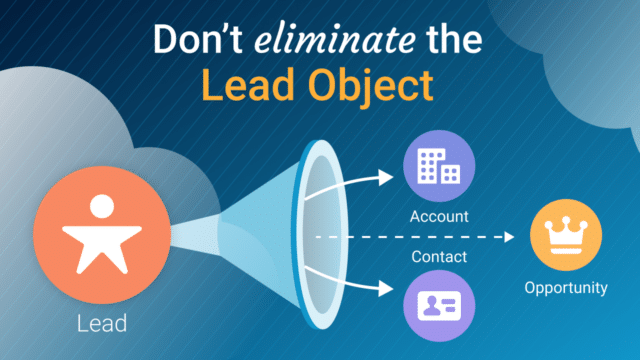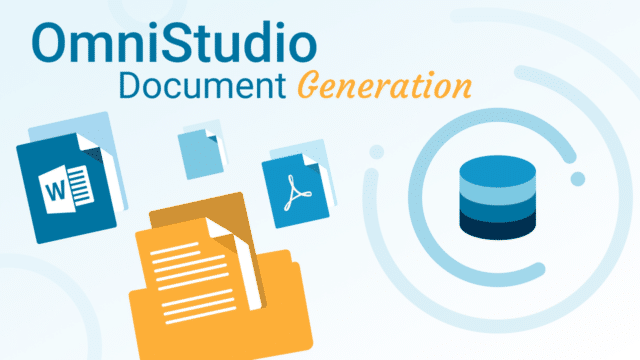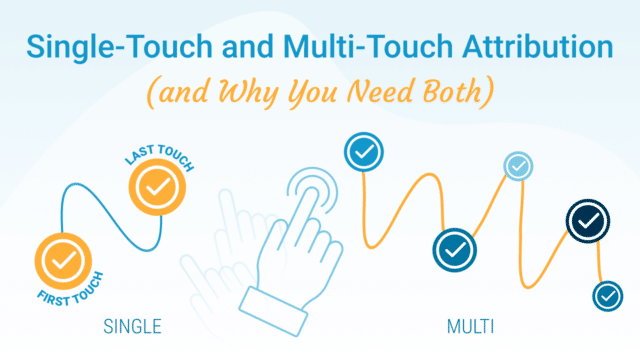Salesforce is a powerful CRM that helps businesses manage customer relationships and streamline their sales processes. One of the cornerstone elements of Salesforce is the Lead object, which allows companies to track potential customers and move them through a qualification process at the top of the sales funnel.
While a staple of the enterprise sales process for decades, in speaking with a number of enterprise SaaS leaders of late, a similar question has been popping up.
Should the Lead object within Salesforce be eliminated from business processes and instead have all work centralized on the Account and Contact objects?
This is primarily driven by enterprise organizations’ greater focus on a strategic account approach, driven by marketing and sales motions. In these cases, there is often the perception that eliminating the Lead object allows for greater visibility into these target accounts to measure penetration and momentum.
But here’s our take: while there are select use cases for auto-converting Lead records to their associated Accounts and Contact records, the Lead object is an essential tool for sales teams, especially when SDRs and BDRS are part of the Sales motion and in most cases should not be eliminated. In this post, we will look at some of the reasons why the Lead object is so important.
Tracking the Qualification Funnel
The qualification funnel is a crucial part of the sales process. It is the process of identifying potential customers and determining if they are a good fit for your product or service. This, in turn, ensures that your enterprise sales team is spending their time focusing on individuals who have met certain qualification criteria set out by your organization, as opposed to wasting time with those who will never buy.
Eliminating the Lead object also eliminates some of Salesforce’s built in tracking for the qualification process. As such, a new qualification process needs to be custom-created within the Contact record for tracking which prospects are being worked, which are not in the qualification funnel, and when those prospects are “Sales-Ready” for handoff.
Auto-Assignment Complications
On top of providing insights into where prospects are within the qualification process, eliminating the Lead object also has impacts to business processes that need to be considered.
For starters, auto-assignment rules can be impacted as many organizations have a qualification team (SDR, BDR, etc.) and a sales team. Most assignment rules, whether native to Salesforce or via 3rd party applications like LeanData or Chili Piper, use Account Owners as the signal for assignment when auto-converting. When organizations consider eliminating the Lead object, they need to create custom fields on the Account object that list the assigned BDR, with the enterprise rep as the Account owner. With many strategic accounts, this process can lead to issues in the auto-assignment process.
There can also be significant confusion when strategic Account names include businesses such as Google, Yahoo, Microsoft, etc. The lack of a Lead object can contribute to difficulties regarding how free email domains are handled during the inbound marketing process.
Conversion Tracking
Beyond auto-assignment complexities, conversion tracking is a critical consideration when eliminating the Lead object. When a Lead is properly converted to an Account/Contact/Opportunity in Salesforce, this is reflected in the back-end with a status update of Lead Conversion = True. This True/False value allows for easy tracking from a reporting standpoint of a number of values to illustrate what is working vs what is not, which is critical for any organization looking to optimize its efforts.
Without this signal in place, a process needs to be introduced on the Contact record to provide visibility into what has converted and what has not. When considering this, one must also remember that you cannot simply track each conversion as an equal thing, as many organizations track Lead Conversions at a few different levels:
- Sales Opportunities = Prospects that are qualified to be passed into Sales
- Existing Accounts = Tracking new prospects brought in typically by Marketing into existing customers or key accounts with existing sales opportunities to showcase account penetration
- Non-Sales = Contacts from Partner accounts, PR inquiries, etc… that are not directly related to the business
Beyond tracking conversions at this Lead/Contact level, eliminating the Lead object also causes headaches for the Marketing team that relies on tracking success with the Campaign object. The Campaign object leverages that backend True/False conversion status on the Lead object to track how many Leads were associated with each campaign, and then how many were successfully converted (along with how much pipeline was generated from them). Not using the Lead object removes this key reporting metric from Marketing’s visibility at a Campaign level, and with the rise in multi-touch attribution reporting, the Campaign object has become a cornerstone to measure marketing attribution.
Business Considerations
While the Qualification and Conversion Tracking considerations are significant, there are also a number of items to consider from a business perspective.
The first is from a data storage standpoint. As most integrations don’t bypass the Lead object to create an Account and Contact, but rather auto-convert the Lead records that are created, data storage limits need to be considered due to the abundance of additional records that are being created. Instead of creating one record (the Lead) for all unqualified individuals, three records are now being created – the initial Lead record, and then the automatic Account record (if new) and Contact record. This doesn’t even take into account the increase in API limits that will also increase with all your synced systems, like Marketing Automation, since they are now syncing with multiple records instead of just one.
On top of these increases, another consideration is the mass amount of Account records that will be created. While this makes sense for target account lists, only some people who inbound through marketing initiatives will be associated with one of these key accounts. As a Contact cannot exist without an Account record (outside activating People records for specific cases), this means that all individuals being created from Marketing initiatives will also have Account records created for them. So if you have a situation where you held a webinar that got 1,000 new prospects, most of who are unqualified ? Well… bad news. Now you now are going to have 1,000 Contacts, plus a respective Account for each.
Conclusion
While a select few companies may benefit from moving to a Contact-led model, it is not a decision to be taken lightly. It is expensive to deploy and even more expensive to reverse. (Trust us as we’ve been contacted by many who made this change, regretted it, and asked for assistance going back to the Lead object.)
If contemplating this switch, consider a hybrid model to start. Deploy auto-conversion for only select, key accounts via a tool like LeanData, while keeping all non-key accounts in the Lead object for further qualification. This will ensure that individuals from your most valued clients are still getting into the hands of your strategic account executives while at the same time ensuring a measured qualification process can take place. Also consider use of a Stage 0 Opportunity that serves as a home for both converted Leads that create an Opportunity, but also one for any Opportunities created from the Account or Contact. That ensures that you have one measure (Stage 0 Opportunities created) for the total volume of qualified Opportunities, regardless of if they originate from a Lead, Contact or Account. This approach can assist with many of the reporting challenges that proponents of eliminating the Lead object take issue with.
To sum it all up – while abandoning the Lead object may seem like a good idea for simple management, it is important to consider all the implications, especially from a reporting standpoint, and the needs of other teams. Companies should carefully weigh the benefits versus the costs before making the switch.
Want to discuss your own Revenue Operations? (Or just share some horror stories about that one time you did try to eliminate the Lead object?) Get in touch! We’d love to chat about how you’re using Leads and Opportunities in your own org, and how CloudKettle might be able to help.



